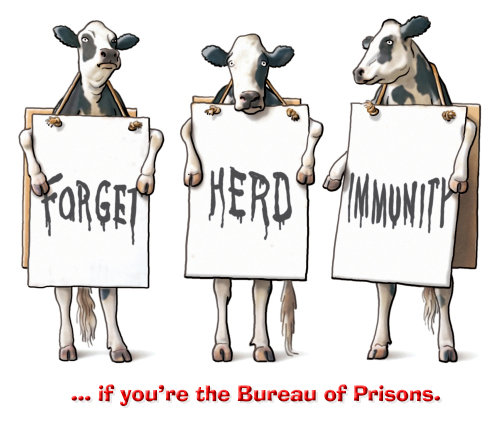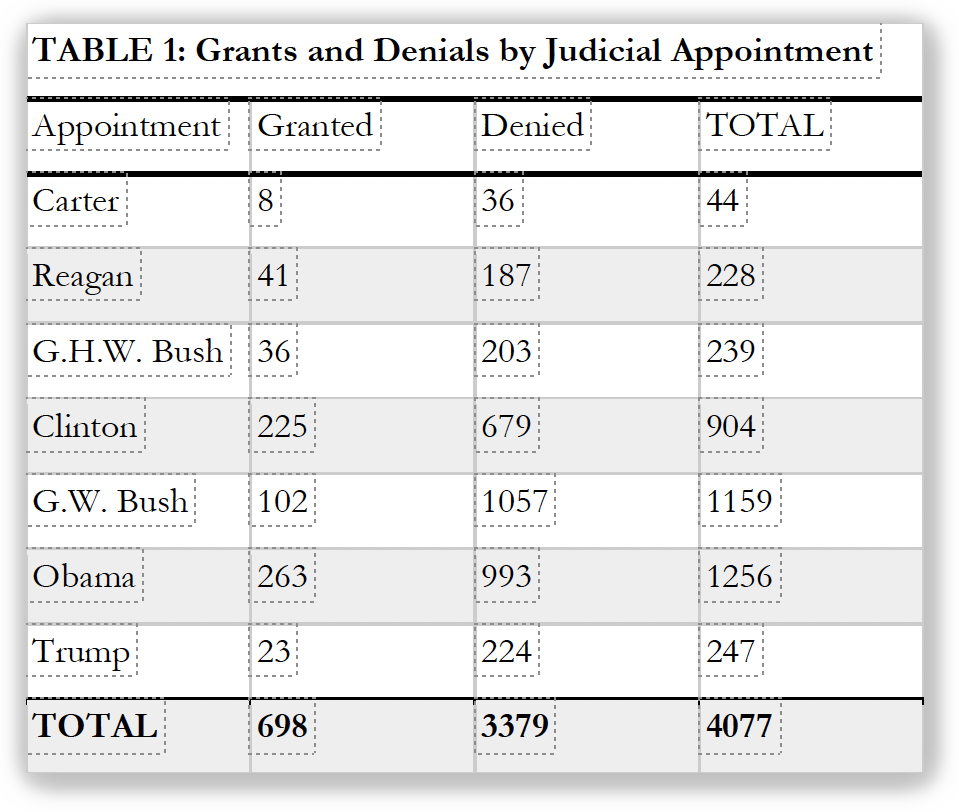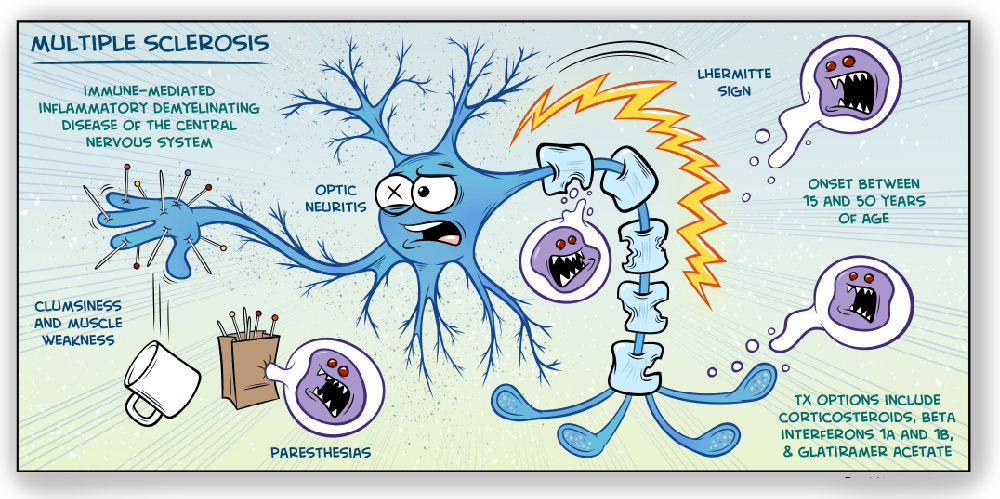We post news and comment on federal criminal justice issues, focused primarily on trial and post-conviction matters, legislative initiatives, and sentencing issues.

REMEMBER COVID? IT’S STILL AROUND IN THE BOP… AND PEOPLE ARE STILL DYING
The Bureau of Prisons reported 61 sick inmates and 136 sick staff in 65 facilities as of last night.
What is curious is that the BOP reported two more inmate COVID deaths last week.
One was from last December. With its usual opacity, the BOP reported last week that on “Friday, December 4, 2020, inmate Carlous Lindell Daily tested positive for COVID-19 at the United States Penitentiary (USP) Victorville in Victorville, California, and was immediately placed in medical isolation. On Wednesday, December 23, 2020, in accordance with Centers for Disease Control and Prevention (CDC) guidelines, Mr. Daily was considered recovered after completing isolation and presenting with no symptoms.”
[Editorial note here: The BOP always trots out the justification in notices like these that ‘we only said he was recovered because the CDC guidelines said he was recovered’. I have heard from too many inmates that ‘recovery’ consists of taking a temperature. The inmates are listed as presenting no symptoms because staff is careful not to ask the inmates about any symptoms].
To be sure, poor Mr. Daily must have been experiencing some continuing symptoms that the crack BOP medical professionals overlooked. Only five days after he was declared fit as a fiddle, “[o]n Monday, December 28, 2020, Mr. Daily experienced vomiting and an altered mental status, and while being treated, became unresponsive. Responding staff immediately initiated life-saving measures. Staff requested emergency medical services (EMS) and life-saving efforts continued. Mr. Daily was subsequently pronounced deceased by EMS personnel.”
Apparently, the Health Services staff was so crushed by losing their ‘recovered’ patient that no one got around to reporting his death for over five months.
 I remember from years ago a judge patiently explaining to a greenhorn lawyer (me) about the 13th chime. The ’13th chime’ comes from the mythical case of Rex v. Haddock, recounted in book Uncommon Law by A.P. Herbert. Some have attributed it to an earlier utterance by Mark Twain. Regardless of its origin, the ’13th Chime” doctrine holds that when a clock strikes 13 times, not only is the 13th strike itself discredited, but the very fact that there was a 13th chime raises doubts about the accuracy of the preceding 12. Twain allegedly said: “The thirteenth stroke of the clock is not only false of itself, but casts grave doubt on the credibility of the preceding twelve”.
I remember from years ago a judge patiently explaining to a greenhorn lawyer (me) about the 13th chime. The ’13th chime’ comes from the mythical case of Rex v. Haddock, recounted in book Uncommon Law by A.P. Herbert. Some have attributed it to an earlier utterance by Mark Twain. Regardless of its origin, the ’13th Chime” doctrine holds that when a clock strikes 13 times, not only is the 13th strike itself discredited, but the very fact that there was a 13th chime raises doubts about the accuracy of the preceding 12. Twain allegedly said: “The thirteenth stroke of the clock is not only false of itself, but casts grave doubt on the credibility of the preceding twelve”.
The point is this: I have heard for months from inmate correspondents that people were dying at FCI XYZ of COVID, but FCI XYZ’s reported deaths never seemed to reflect inmate folklore. Mr. Daily’s demise is the second time in three weeks that the BOP issued a way-after-the-fact admission about a death that went unreported during the height of the epidemic. How many more of these unreported deaths – which, had they been reported in a timely manner, would have made BOP conditions during the pandemic look even direr – are lurking out there? What’s more, the under-reporting is consistent with the BOP practice many prisoners have reported of medical staff doing the ostrich thing, not inquiring about symptoms other than to take a temperature?
 Certainly, under-reporting would not surprise The Marshall Project, which has been criticizing BOP sleight-of-hand on case numbers for months:
Certainly, under-reporting would not surprise The Marshall Project, which has been criticizing BOP sleight-of-hand on case numbers for months:
The Federal Bureau of Prisons also had a policy of removing cases and deaths from its reports. As a result, by the spring of 2021, we could no longer accurately determine new cases in federal prisons, which had more people infected than any other system.
Now for the other death last week, Sherri Hillman, a pretrial detainee who died at the abattoir known as FMC Carswell, the BOP’s only women’s medical center at Fort Worth.
 The circumstances around the Carswell death were painfully similar to the April death of Martha Evanoff at that facility. According to the Fort Worth Star-Telegram, Sherri had been sent to Carswell while awaiting sentencing in Kentucky, after being hospitalized with COVID since January. “She was transferred to (Carswell) in Fort Worth because most people thought she would be getting better care there than in Kentucky,” her attorney told the newspaper.
The circumstances around the Carswell death were painfully similar to the April death of Martha Evanoff at that facility. According to the Fort Worth Star-Telegram, Sherri had been sent to Carswell while awaiting sentencing in Kentucky, after being hospitalized with COVID since January. “She was transferred to (Carswell) in Fort Worth because most people thought she would be getting better care there than in Kentucky,” her attorney told the newspaper.
Her mother said, however, “from what she was telling me, I just don’t think she was treated right.” Two other Carswell inmates told the paper said they heard Sherri crying out for help for several days from her cell on the medical floor. One woman, who is also staying on the medical floor, said she heard the shouting.
“Everyone on the floor heard her screaming for help for several days,” a witness, who did not want her name to be used out of fear of retaliation, told the Star-Telegram, “For days, they said she’s faking it and there’s nothing wrong with her, and they ignored her cries for help. She would say, ‘Please, somebody help me.’”
Another inmate reported to me, “The poor woman begged for 4-5 days for help and was told to ‘shut up’.”
Sherri died alone in her cell on June 14.
BOP, Inmate Death at Victorville (June 17, 2021)
BOP, Inmate Death at FMC Carswell (June 17, 2021)
Fort Worth TX Star-Telegram, Woman told mother, ‘I can’t do this anymore,’ before death at prison in Fort Worth (June 17, 2021)
– Thomas L. Root























